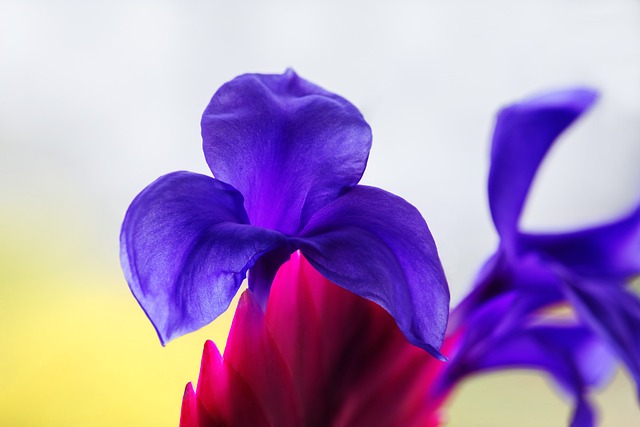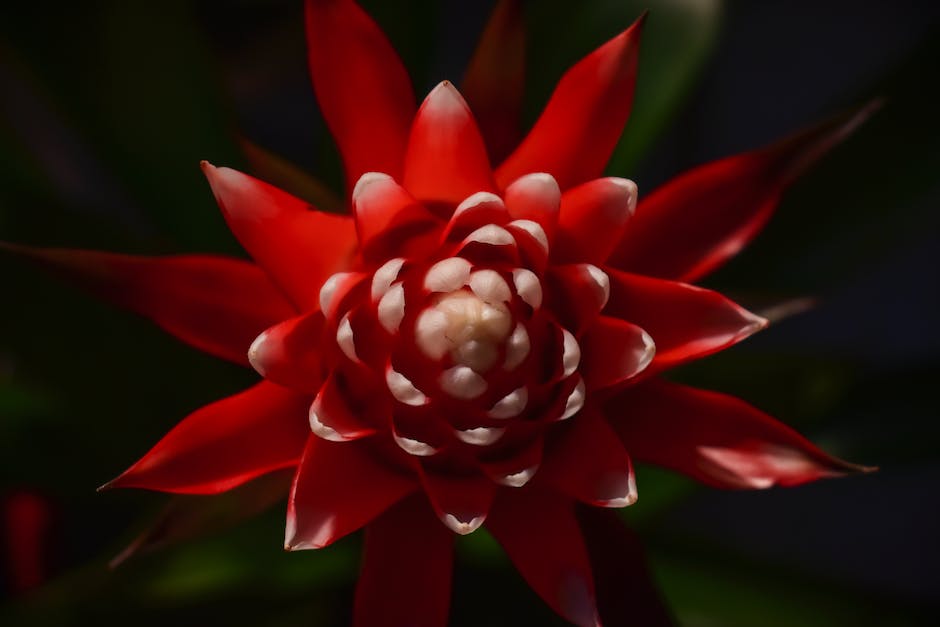What to know:
- 1. What is a ?
- 2. Varieties of Bromeliad Plant
- 3. How to Care for a Bromeliad
- 4. Light Requirements for Bromeliad
- 5. The Fascinating Overview of Bromeliad Flowers
- 6. Bromeliad Propagation
- 7. Tips and Tricks to Growing a Healthy Bromeliad
- 8. Common Pests and Diseases That Can Affect Bromeliad Plants
- 9. Bromeliad Decorating Ideas for Your Home
- Questions & Answers
1. What is a ?
Bromeliad Basics
A bromeliad is an epiphytic plant of the Bromeliaceae family that typically comprises terrestrial, epiphytic, or saxicolous species. It is sometimes referred to as a pineapple plant, bromeliad pineapple or just pineapple! They are native to the tropical and subtropical Americas but can also be found elsewhere, such as in various Asian countries. The well-known pineapple is a bromeliad, but there are many others as well.
Unique Characteristics of Bromeliads
Bromeliads have a variety of unique characteristics that distinguish them from other plants. One is that they produce a tank-like structure at the center of their leaves, which acts as a reservoir of water. In addition, they have modified leaves that form sharp points than can be used to perch on tree branches or rocks like a roost. Lastly, bromeliads are able to absorb moisture and nutrients through their leaves.
A Variety of Bromeliads
The Bromeliaceae family is incredibly diverse, with more than 3,000 species. It includes species of bromeliads that vary in size, shape and growth habits. Some of the more popular species include:
- Tillandsia – air plants
- Billbergia – a cluster of beautiful, colorful bracts
- Ananas – edible pineapple
- Gymnocalycium – low growing cacti
- Aechmea – often referred to as silver vase
The most common use of bromeliads is as ornamental plants in the home or garden, but they can also be used for landscaping due to their low maintenance requirements. Bromeliads also have other uses such as food, medicine, and fiber (e.g., pineapple rugs).

2. Varieties of Bromeliad Plant
plant if applicable.
The Bromeliaceae family is made up of nearly 3,500 species that are commonly called bromeliads. This tropical family of plants includes popular varieties like pineapples, air plants, and Spanish moss. They’re epiphytic, meaning they grow on other plants and absorb water and nutrients from the air. Here’s a closer look at a few of the most popular bromeliad species:
Neoregelia – Otherwise known as “blushing bromeliad,” this species has brilliantly-colored leaves and grows in the shape of a small rosette. It’s native to tropical climates, likes bright indirect sunlight, and works well as an indoor plant.
Vriesea – This shaggy-looking species is also known as the “painted feather” or the “flame bromeliad.” It has long, arching leaves and bright red-and-yellow leaves, and it’s a low-maintenance plant that thrives outdoors in tropical and subtropical regions.
Aechmea – Aechmea bromeliads are known for their long, wavy, silvery leaves that look like blades of grass. They like plenty of bright sunlight and thrive in warm, humid temperatures. They also need good drainage for optimal growth.
Tillandsia – Better known as air plants, tillandsias are bromeliads that don’t need soil. They absorb moisture and nutrients from the air and tend to be small, which makes them a popular choice as a houseplant. They need bright, indirect sunlight and occasional misting.
While some varieties of the Bromeliad family prefer warm, humid climates, others can tolerate cooler temperatures. With a little research, you can find the type of bromeliad that will thrive in your home or garden.

3. How to Care for a Bromeliad
care
When it comes to caring for a bromeliad, the key is to understand their needs and provide the right environment. Below are some general tips on how to keep your bromeliad healthy and thriving:
Lighting and Positioning
Bromeliad plants require bright but filtered or indirect light throughout the day. Place the bromeliad near a window or in a bright spot, but not in direct sunlight, as this may cause the leaves to burn. Also, be conscious of the temperature of the room or space the bromeliad is in and make sure it’s not too hot or too cold.
Watering Requirements
Most bromeliads require little water. In fact, too much water can kill them. They should be watered no more than once every week or two, with no more than one cup of lukewarm water in the tank. Allow the soil to dry between watering and water only from the tank. Check the soil every week or two to make sure it’s not too dry.
Fertilizing Needs
Bromeliads do not require regular fertilization; however, it’s still a good idea to provide them with a balanced liquid fertilizer at half strength once every two or three months. Follow the directions on the fertilizer carefully; applying the wrong amount can damage the bromeliad’s growth.
Pruning
When the bromeliad is done blooming, the center part of the plant (where the flowers emerged from) can be removed. Cut this part off at ground level using a clean pair of scissors or shears. After pruning, the bromeliad should start to produce more flowers soon.
Temperature
Bromeliads do well in temperatures between 65° Fahrenheit and 80° Fahrenheit. They should not be placed in direct drafts from doorways or windows or in rooms where AC units vent directly on them.

4. Light Requirements for Bromeliad
Light Requirements
Bromeliad plants, part of the Bromeliaceae family, prefer bright, filtered sunlight. This usually means keeping them near eastern, western, or southern-facing windows. If placed in a north-facing window, the amount of light needs to be higher.
Direct sunlight on the bromeliad for too long could burn its leaves, so it’s important to keep it away from extremely sunny spots. These plants will tolerate lower light conditions, but they likely won’t reach full size and bloom.
If you’re not sure how much sun your bromeliad is getting, you can measure it with a light meter. Generally speaking, it should get around 2,500 to 5,000 foot-candles (FC) of light to thrive. Here’s a summary of the three levels of light intensity:
| Light Level | Light Intensity (fc) |
|---|---|
| Low | 2,500-3,500 |
| Medium | 3,500-5,000 |
| High | 5,000+ |
When It’s Too Dark
If your bromeliad is not getting enough sunlight, it wouldn’t hurt to supplement it with grow lights. Use either full spectrum fluorescent bulbs or LED lights so the plant can get the necessary light intensity. Some growers prefer to use fluorescent bulbs for more intense light.
Knowing your bromeliad’s light needs is just the start. For the best performance and healthiest plants, make sure to also consider other factors when choosing the perfect spot for your Bromeliaceae family members.
5. The Fascinating Overview of Bromeliad Flowers
flowers
Bromeliad flowers are unique species and make a great addition to any garden! They have an eye-catching foliage with colorful patterns and unique flower shapes. The Bromeliaceae family contains over 3,000 species that are native to tropical and subtropical regions.
The flowers of the Bromeliaceae family come in many forms, shapes, and sizes. Their petals come in shades of pink, yellow, purple, red, and orange and can be used to add a splash of color to any home or garden. In addition, some species have bi-colored petals and can be very eye-catching.
The unique foliage is also one of the key features of bromeliad flowers. The leaves are generally long, slender, and waxy. As the bromeliad matures, they can develop a variegated pattern, having areas of lighter and darker colors. This makes them stand out in the garden.
Moreover, bromeliad flowers are also unique in terms of their structure. Most of these flowers are epiphytic, meaning they grow on other plants. This is a great way to add texture and depth to any garden. Bromeliad plants also produce a waxy substance that helps keep them hydrated in their natural habitat.
Table: Common Bromeliad Flower Shapes
| Type of Flower | Shape |
|---|---|
| Cluster | Small and bulging out in all directions |
| Funnel | Tubular-like |
| Star | Extends horizontally with pointed tips |
| Heart | Extends outward with heart-like shape |
| Cone | Cone-like |
In addition to their eye-catching petals and foliage, bromeliad flowers come in a variety of shapes, such as:
- Cluster – Small and bulging out in all directions
- Funnel – Tubular-like
- Star – Extends horizontally with pointed tips
- Heart – Extends outward with heart-like shape
- Cone – Cone-like

6. Bromeliad Propagation
Propagation.
Bromeliads, from the Bromeliaceae family, are some of the most decorative and easy-care houseplants. Propagating them is simple, and offers an economical opportunity to increase your collection.
Types of Propagation
- Pups/Offsets – Baby plants grown from the base or sides of the main plant
- Seeds – Tiny seeds typically encased in a seed pod
- Division – Manually splitting a clump into several smaller plants
- Leaf Cuttings – Cutting healthy leaves and replanting them
Pups/Offsets are the most popular method of propagation when it comes to bromeliads. An offset forms at the base of the mother plant as it matures, and after a few months, it can be easily removed from the main plant. The offset should be at least three inches in diameter, and its roots should have formed. To remove the offshoot, you should use a sharp and sterile knife and cut the offset off as close to the mother plant as possible. Then replant it in high-quality potting soil, making sure the crown, or the center of the plant, is exposed on top of the soil. Finally, water until the soil is saturated and wait for new growth—your new bromeliad should start to develop in about a month.
Seeds should be planted in a shallow tray filled with a wet sphagnum moss and seed-starting mix. When the potting mix is properly moistened, the seeds can be sowed like normal. Place the tray in a spot with indirect sunlight and make sure to mist the moss every other day. Once the seedlings have sprouted, transfer them to individual small pots and water thoroughly.
can be an easy and fun activity to get you closer to having beautiful plants that you can enjoy. With the proper care and attention, you can grow new bromeliads that will surely brighten your home for many years to come.
7. Tips and Tricks to Growing a Healthy Bromeliad
Light – Bromeliads love bright, filtered light, so be sure to avoid direct exposure to sunlight. Choose an area in your home that has indirect and even exposure. Make sure to rotate your plants once or twice a month, so the entire plant receives exposure.
Water – While they can handle wet weather, bromeliads require well-drained soil. Water your bromeliad when the top two inches of soil are dry. As with most plants, avoid over-watering as it can lead to root rot. To water your bromeliad most efficiently you can fill the cup at the center of the plant.
Fertilizer – To promote growth, make sure to fertilize your bromeliad when the top two inches of soil are dry. It’s best to use a diluted liquid fertilizer half as strong as the manufacturer recommends. Too much fertilizer can lead to discoloration or use of excessive energy for foliage growth.
| Fertilizing Frequency | Season |
|---|---|
| Every two weeks | Summer |
| Monthly | Spring/Fall |
Temperature – In its natural environment, bromeliads are used to warm temperatures. Optimal growing conditions are typically between 65°F–80°F, try and keep your plants in an area where these temperatures are not exceeded. Bromeliads can handle some light frost, but they prefer temperatures above 50°F.
8. Common Pests and Diseases That Can Affect Bromeliad Plants
plants.
Bromeliads are an excellent choice for low-maintenance indoor and outdoor gardens. Unfortunately, however, their lush foliage and colorful blooms can be susceptible to pests and diseases. To help you keep your plants healthy and thriving, here’s a list of some of the common bugs and illnesses you may encounter.
Aside from pests and diseases, bromeliads can also be affected by nutritional deficiencies and extreme temperatures. Make sure to keep an eye out for signs of damage or wilting and address them immediately. If the plant remains in an ideal growing environment with proper care, it should stay healthy and happy!
| Pest/Disease | Appearance | Treatment |
|---|---|---|
| Mealybugs/ Scale insects | Small white/brown insects clustered on foliage near base | Insecticidal soap or neem oil |
| Root rot | Sluggish growth, yellow leaves, and wilting | Decrease watering, improve drainage, fungicide |
| Powdery mildew | White powdery coating on leaves and stem | Stop watering, fungicide/sulfur spray |
| Nutritional deficiency | Yellowing leaves or pale blooms | Fertilize regularly |
| Temperature stress | Drying leaves, wilting, browning tips | Move bromeliad to area with moderate temperature |
9. Bromeliad Decorating Ideas for Your Home
plants
Bromeliads are a tropical plant family that make beautiful, vibrant and low-maintenance houseplants.These unique plants make a beautiful addition to any room and bring a touch of nature indoors, especially when grown in one of these 9 creative decorating ideas!
Cascades
Create a stunning wall of cascading bromeliads in a variety of colors and sizes. Starting with the tallest plant at the top, hang each plant from the wall so that the pot is just below the previous one. This makes for a stunning centerpiece that’s sure to wow your guests. It also doubles as a natural air purifier, releasing oxygen and trapping pollutants.
Stands
An easy way to add an interesting pop of color to any room is to place bromeliads on plant stands. Add one stand with a single bromeliad near your window, or cluster multiple plants of different sizes and colors in each corner of a room for a more dramatic effect. If you have a large living room, consider placing several tall stands in the center of the room.
Terrariums
Creating a terrarium is a fun and creative way to showcase your bromeliads. Just choose a terrarium vessel, add some potting mix, and plant your bromeliad in the center. For a more exotic display, mix in some moss and gravel for a lush rainforest look. A terrarium is the perfect way to bring nature indoors!
Hanging Planters
Hanging planters can be used to bring the beauty of bromeliads to any height. Hang them from the ceiling in different sizes and colors. You can even hang multiple bromeliads in one planter to create a unique effect.
Garden
Create a stunning garden using bromeliads in all sorts of shapes and sizes. Plant them in the ground or use containers to give them a more polished look. Planting them outdoors provides more light and a more natural environment, which makes them thrive. Bromeliads are great for creating an outdoor oasis.
Questions & Answers
:
Q: What is a ?
A: A is a family of perennial flowering plants from the Neotropical regions, commonly found in tropical and subtropical climates. Bromeliads come in a wide variety of shapes and sizes, and they are recognized for their ornamental foliage and bright, colorful flowers.
Q: How do you care for a plant?
A: Bromeliads require warm, humid conditions to thrive. Place the plant in bright, indirect sunlight and water regularly. Use a potting mix designed for Bromeliad plants, along with an appropriate size pot. Bromeliads have special needs for water, nutrients, and humidity, and can survive with little attention if the basic requirements are met.
Q: What are some common types of Bromeliads?
A: Some of the most common types of Bromeliad plants are the Neoregelia, Puya, Billbergia, Vriesea, Aechmea, and Guzmania. Each of these species have different characteristics, from the luscious foliage, unique blooms, and colors.
Q: How long do Bromeliad plants live?
A: Bromeliads can live for many years, depending on how well they are taken care of. When properly cared for, these plants can live for decades.
So there you have it! We’ve gone over some of the basics of care. Remember the important rules to get the most out of this beautiful plant: water often, but not too often; give it plenty of indirect sunlight but not too much; keep the temperature as steady as possible; and add some fertilizer to the water every now and then. With mindful care, you’ll have a vibrant and healthy Bromeliad to enjoy for years to come.
